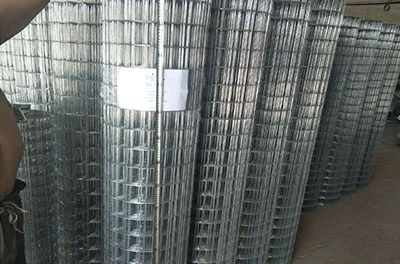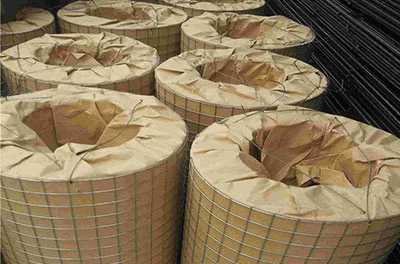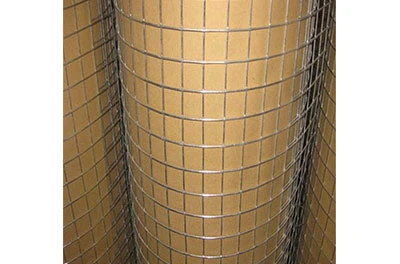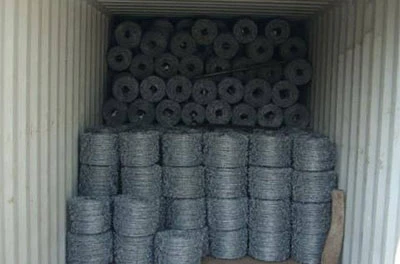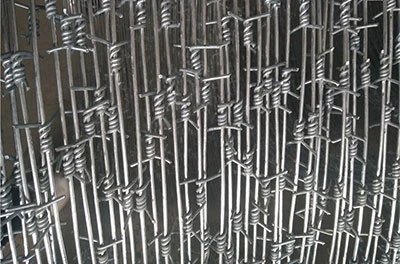Nov . 21, 2025 19:00 Back to list
What Is a Grating Wall? Benefits, Uses & Industry Trends Explained
Understanding Grating Walls: Why They Matter More than Ever
At first glance, a grating wall might seem like just another structural detail, but its global significance is pretty profound once you dig in. Grating walls—those strong yet airy panels made of metal or composite materials—play a critical role in everything from industrial safety to urban architecture and humanitarian projects. Knowing how these walls function not only saves money and time but can improve safety, sustainability, and even social welfare around the world.
Why should you care? Globally, structures incorporating grating walls cope better with environmental stressors, allow for better airflow and drainage, and reduce hazardous build-ups—making them a quiet hero in many complex systems. If you’re involved in construction, infrastructure, or disaster relief, the grating wall is something worth your attention.
The Global Context: Grating Walls in a Changing World
According to the International Organization for Standardization (ISO), infrastructure safety standards are evolving rapidly to accommodate urbanization patterns that grow more dense by the year. Meanwhile, over 55% of the world's population now lives in urban areas (UN Habitat), demanding materials and designs that optimize space and durability.
Here’s where grating walls come into the picture: they offer modular, scalable solutions that meet these needs affordably. Industrial applications benefit immensely—whether it’s in factories across Asia or green energy projects sprouting in Europe. But challenge remains: how to maintain strength without adding unnecessary weight, or how to optimize installation speed without compromising quality?
Frankly, these challenges highlight just how pivotal smarter design around grating walls really is—especially for emergency deployments or environmentally sensitive builds.
What Exactly Is a Grating Wall?
In simple terms, a grating wall is a wall system made from panels featuring a grid or mesh of interconnected bars, typically from steel, aluminum, or composite materials. These walls combine strength with permeability—meaning they allow air, light, and sometimes water to pass through while providing structural support. It’s like having the best of both worlds: you get solid protection without the stuffiness of solid concrete or brick.
Industrially, they’re indispensable for walkways, platforms, and fencing—especially where ventilation or drainage is important.Grating wall designs have also been adopted in humanitarian settings for quick-deploy shelters and containerized modules, where modularity and portability are top priorities.
Key Features of Grating Walls in Practical Use
1. Durability
Many engineers swear by galvanized or stainless steel grating for longevity. Resistance to corrosion and wear means the walls stand up in wet, salty, or chemically aggressive environments without peeling or weakening over time.
2. Scalability and Modularity
One great strength of grating walls is how easily you can customize or expand them. Whether you’re enclosing a small machine platform or creating extensive fencing for an industrial site, these walls adapt seamlessly.
3. Cost Efficiency
While upfront costs vary, the lifespan and low maintenance typically provide good value. The materials are often standardized, enabling mass production and reduced supply chain friction.
4. Environmental Benefits
Permitting airflow reduces mold and mildew build-up. Also, grating walls often incorporate recycled metals or composites, aligning with growing sustainability goals in construction.
5. Safety and Compliance
Regulatory bodies worldwide increasingly mandate grated walkways for safer industrial environments. The grating wall fits effortlessly into these frameworks, promoting accident reduction.
6. Ease of Installation
Compared to solid walls, they’re lighter and easier to bolt or weld into place, saving labor time on site.
Takeaway: Durability, flexibility, cost, safety, and sustainability make grating walls uniquely suited for modern challenges.
How Grating Walls Are Used Globally
From harsh industrial zones in Southeast Asia to wind energy farms in Northern Europe, grating walls are everywhere. For example, in post-disaster relief operations in the Caribbean, modular grating wall panels have sped up shelter assembly while maintaining ventilation—crucial in humid climates.
Remote industrial sites rely heavily on grating walls for elevated walkways above dangerous machinery or water. Mining companies in Australia, for example, use these walls to protect both equipment and workers, combining robustness with minimalist design. Even in urban architecture, grating walls form stylish facades that reduce heat gain while preserving natural lighting.
Large utility companies appreciate grating walls for security fencing, a kind of no-nonsense barrier that doesn’t trap heat or create heavy shadows. Think of solar farms where air circulation helps cool sensitive panels.
Advantages and Long-Term Impact of Using Grating Walls
- Cost Savings: Fewer replacements and less maintenance add up.
- Environmental Sustainability: Promotes airflow, reduces moisture problems, and often made from recycled materials.
- Safety First: Non-slip surfaces, high visibility, and robust construction prevent worker injuries.
- Social Impact: Improves living conditions in humanitarian contexts through breathable, modular housing.
- Trust and Reliability: Proven across industries, grating walls inspire confidence amongst engineers and site managers alike.
It’s curious how a simple thing like a permeable wall can touch so many levels—from social welfare to cutting operational costs.
Emerging Trends and Innovations in Grating Wall Technology
Looking ahead, the industry is embracing lightweight composite materials that outperform traditional metals in corrosion resistance and installation ease. Add digital design optimization enabled by BIM (Building Information Modeling), and customization via 3D printing feels closer than ever.
Efforts to integrate solar reflective coatings, or incorporate sensors within the grating structure for smart building monitoring, hint at future multi-functionality. The green energy push is also encouraging manufacturers to develop grating walls that optimize airflow while supporting photovoltaic arrays or wind-harnessed devices directly on their frames.
Automation in fabrication improves tolerances and reduces waste, while policy shifts globally emphasize sustainable sourcing—all converging to transform how we think about these once simple walls.
Challenges Faced and Solutions Being Developed
Despite advantages, grating walls face challenges like susceptibility to theft (valuable metals, after all), installation complexities in retrofits, and a learning curve for less-experienced crews. Also, not all applications tolerate the light permeability—sometimes solid walls are better for soundproofing or full security.
To tackle these, some vendors add anti-theft features or design hybrid panels combining solid and grated sections. Training initiatives help contractors handle installation more confidently. Moreover, innovations in material coatings and fasteners aim to streamline assembly and increase lifespan.
Product Specification Table
| Specification | Standard Grating Wall | Composite Grating Wall |
|---|---|---|
| Material | Galvanized Steel | Fiberglass Reinforced Plastic (FRP) |
| Weight per m² | 24-30 kg | 8-12 kg |
| Corrosion Resistance | High (with coating) | Very High |
| Typical Load Capacity | 5kN/m² | 3kN/m² |
| Installation Method | Welding/Bolting | Bolting/Clipping |
| Life Expectancy | 15-20 Years | 20-25+ Years |
Vendor Comparison: Who Makes the Best Grating Walls?
| Feature / Vendor | Chengsen Mesh | Metro Grates | Global Steelworks |
|---|---|---|---|
| Customization Options | Wide range, tailored sizes | Limited presets | Custom engineering, extra cost |
| Material Quality | Marine-grade galvanized steel | Standard galvanized steel | Premium stainless steel options |
| Lead Time | 2-3 weeks | 4-6 weeks | 3-5 weeks |
| Pricing | Competitive / volume discounts | Mid-range | Premium pricing |
| Global Shipping | Full international logistics | Regional only | Selective export partnerships |
FAQ: What You Often Wonder About Grating Walls
Q: How does a grating wall improve safety in industrial zones?
A: Grating walls provide sturdy, slip-resistant surfaces and barriers while allowing air and light to flow freely. This minimizes risks of slipping on wet surfaces, reduces heat accumulation, and allows hazardous gases to dissipate—creating safer work environments.
Q: Can grating walls be used in flood-prone areas?
A: Absolutely. Because these walls allow water to pass through rather than pooling, they reduce flood damage and structural stress. Many relief organizations value them for quick-assembly shelters in such zones.
Q: Are composite grating walls worth the premium price compared to steel?
A: It depends on the use case—composites weigh less, resist corrosion better, and often last longer, which may save money long term. For coastal or chemical environments, composites can outperform steel.
Q: How customizable are grating wall panels for unique projects?
Most vendors—including Chengsen Mesh—offer tailored sizing, material choices, and finish options. This flexibility is especially useful in projects with unusual dimensions or specific load requirements.
Q: Is installation of grating walls labor-intensive?
Not particularly. Thanks to standardized panel sizes and straightforward mounting systems, installation is generally rapid. However, complexity can increase with site conditions or custom designs.
Wrapping Up: Why Grating Walls Are Here to Stay
In the grand scheme of infrastructure and industrial design, grating walls fill a niche that’s equal parts practical and innovative. They blend strength with openness, durability with sustainability, fitting neatly into the demands of modern construction and humanitarian work. Looking ahead, their role is only set to grow, with exciting new materials and design technologies making them smarter, greener, and even easier to use.
If you’re intrigued by what a high-quality grating wall can do for your project, why not take the next step? Visit our website to explore available options and see how these walls could transform your spaces.
References:
Latest News
-
Durable and Custom Metal Grid for Drainage Solutions | Chengsen Mesh
NewsNov.24,2025
-
Durable Metal Drain Grill Solutions | Urban & Industrial Drainage Experts
NewsNov.23,2025
-
Hinged Grating: Durable, Safe, and Efficient Infrastructure Access Solutions
NewsNov.22,2025
-
Durable and Customizable Grating Stainless for Industrial & Infrastructure Needs
NewsNov.20,2025
-
Grating Plumbing: Durable & Efficient Drainage Solutions For Modern Infrastructure
NewsNov.20,2025
Our company owns has excellent CAD steel grating drawing designers, who can provide customers with perfect steel grating layout design and better meet customers' special requirements for products. We have been adhering to it the business tenet of "quality first, customer first", with high-quality products, reasonable prices, and the fastest delivery time, we wholeheartedly provide customers with a full range of services! Welcome new and old customers to cooperate sincerely and create brilliance together!
Contact Us
WELCOME TO OUR COMPANY!
Thank you for your interest in our services! If you have any questions or wousld like to book a service, please don’t hesitate to contact us. Our team is dedicated to providing you with the highest level of service and support, and we are committed to working with you to make your event a success.

Service Email

Service Phone
Product Center
Contact Us
- Phone: +86 +86 15733154345
- E-mail: sales@chengsenchina.com
- Address: B1213 GLOBAL CENTER, NO.226 ZHONGHUA NORTH STREET, SHIJIAHUANG, CHINA



